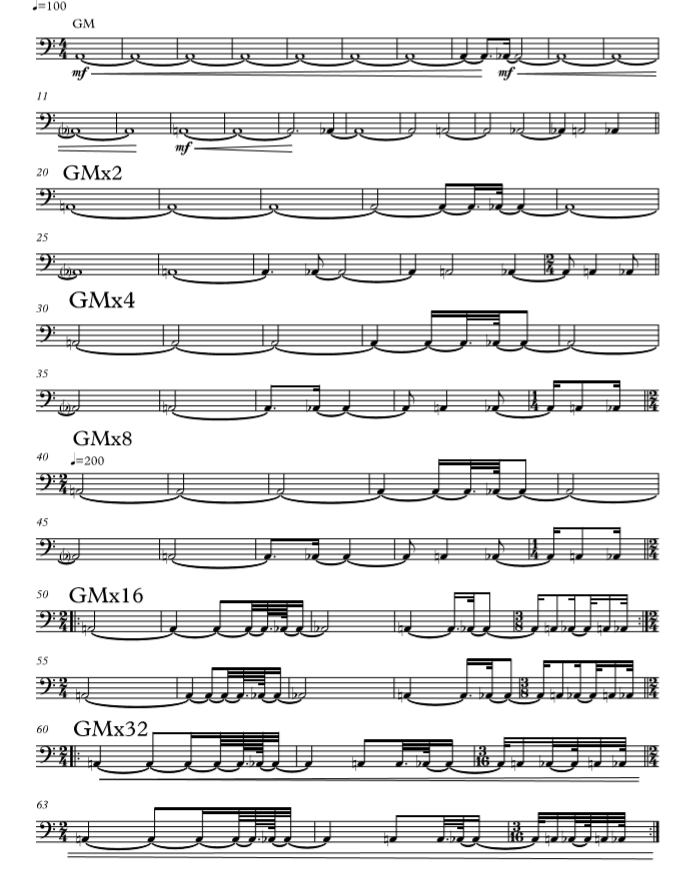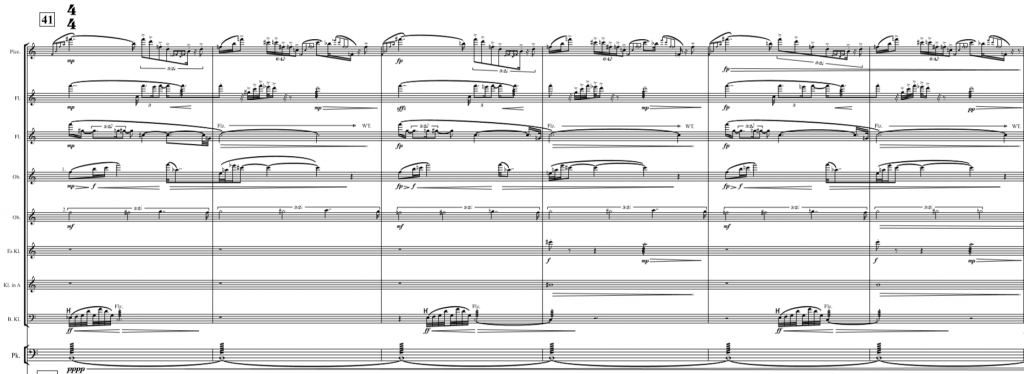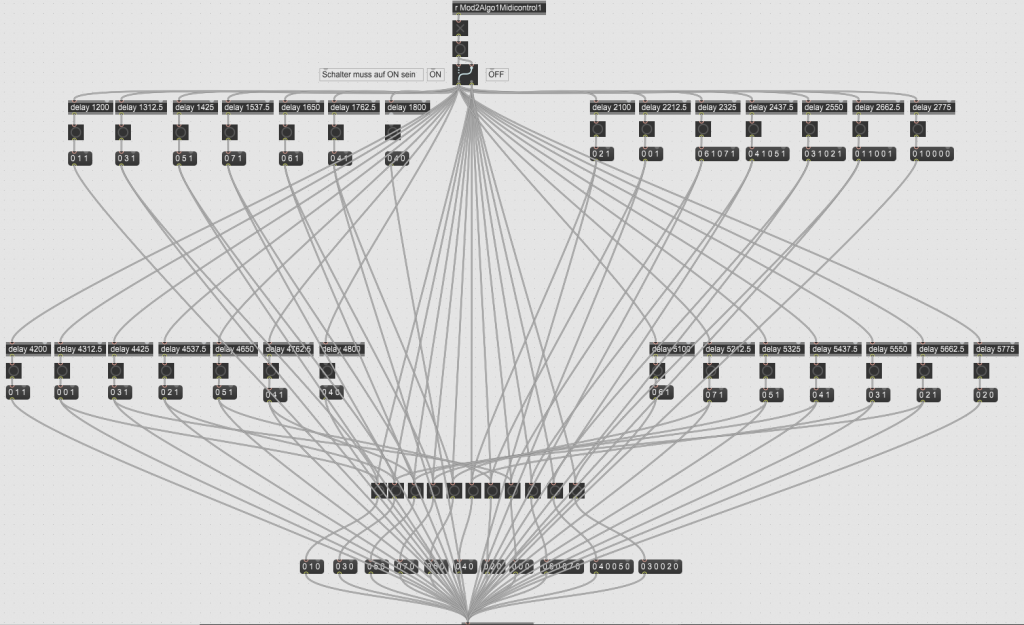Duration : 15min – Premiered on april 27th 2018, conducted by Titus Engel –
Commissioned by the Deutsche Radio Philharmonie Saarbrücken Kaiserslautern
The title is inspired by the two ancient Greek words
Neo : New / Young
Polis : the City / the State
The Genesis
Since I started writing music, I have been recording everyday sounds. I capture movements, atmospheres, moments of life, which I isolate before reworking them in the studio. Today, I can measure their influence on my sound universe, and it is from this awareness that the idea of writing Neopolis was born.
For several months I recorded my subway trips in Paris. By passing these tracks through several filters and under different configurations, I was getting closer to my orchestral intentions. The horizontal aspect as well as the dynamic, as well as the vertical aspect as the textures, were clearly revealed in these transformed recordings. (For the installation Surface of 2016, one of these recordings mentioned above sets the sound set.) My musical research finally took shape in the form of a translation of everyday sounds.
Neopolis‘ original intention is similar to that of Clément Janequin’s figurative score Les cris de Paris. The less I invent and stylize, the closer I get to the desired result. Unlike Edgard Varèse‘s work on the Rite of Spring in the Amériques, or Luciano Berio‘s technique of collage of quotations in the 3rd movement of his Sinfonia, my starting point is extra-musical and moves away from the works that have already been created to focus on raw matter and the energy of everyday situations.
This starting point is also at the origin of the idea of developing an original orchestral semantic in which style and writing can vary as radically as the perceived and reflected environment.
The allegory
Neopolis is the musical portrait of an utopian megalopolis. A succession of short orchestral movements sketches the features of an imaginary capital. The narrator (the young Niemana) evolves through the streets, atmospheres and sounds of this city, feeding on the energy that emerges from the encounter between the many cultures it brings together. He observes the singular architecture and biomimetic urban planning of this city and lets the influences resonate within him.
As an external observer, he builds and deconstructs his own cultural identity through his perceptions and systematic reflections on what surrounds him. The incessant transformation of his inner world is at the heart of this work and is reflected in the composition processes used. A duality emerges between the instinct that perceives things brutally, and the intellect that simultaneously puts them in perspective.
The creative and artistic act is an act that I believe is always part of its environment and its contemporaneity. My approach here must be the opposite of the idea of collage, but an instinctive articulation of an original sound material.
A photo, a text or a film is a testimony of a moment. But through the choice of words and the choice of the angle or shooting, we will always relate a vision, however objective and factual it may be, with a certain degree of subjectivity. I became aware that any sound material could move like a body capable of reacting to the slightest events affecting its environment. All this, if the intrinsic logic that makes sound mass definable as an element is perceptible in an analytical or instinctive way.
The idea was therefore to define the material as an entity that like an individual is in movement and interacts with its surroundings.
The narrator’s inner world, which evolves in the midst of Neopolis‘ soundscapes, is not represented by an instrument or group of instruments, such as the viola in Hector Berlioz‘s Harold in Italy, but by the incessant transformation of the sound material.
A Symphony
Its organization, in a duration of 15 minutes, is the synthesis of a first work on an orchestral material which development extended from its origin in 2015 to the premiere in 2018.
These are four very short main movements, with different characters and which are introduced by an “architectural” formula of a very slow tempo that opens the space by evoking the masterly towers at the entrance to the Neopolis city:


1st Movement (2017 – Tahiti)
The Elementary
In this movement my search was to define an articulation in a pattern that I call structural patterns. These patterns are defined by their major characteristic of extending over a long period of time and thus influencing the structure and deployment of the shape.
The idea was to represent the movement of primary and universal energy masses (wind/air/water) and also to create a perspective effect through the vanishing point.
A listening to what could be a movement common to all elements, all species and all cultures. An allegorical proposal for the entrance of this city, which has a biomimetic organization and architecture and the appearance of a forest.
A general pattern (GM) is articulated as a canon and deployed in a spiral according to the proportions of the Fibonacci sequence, multiplying the tempo by two at the end of each cycle.

2nd Movement (2017-Saarbrücken)
The game
In July 2017 I was staying in my hometown of Saarbrücken and spending time with my family and the children. I composed the second movement in the style of a scherzo.
A theme with a classical appearances appears and unfolds for the duration of a movement, evoking the play and joy experienced by the narrator at the sight of a festive moment:

3rd movement (2015- Paris)
This movement is the basis of the writing intention of this musical pages.
I composed Neopolis‘ first sketches in Paris, between January and March 2015. The idea of a peaceful coexistence of antagonistic cultures is at the heart of the first creative impulse.
In these first sketches, I was looking for a writing of extreme expressiveness in the gesture while keeping a textural dimension as a whole.

A texture in motion, an abundance. To use the metaphor of the anthill, which from a distance resembles an ordinary pile of earth and which, as we move closer, moves from the appearance of a homogeneous mass to a multitude of heterogeneous elements, individuals, in motion, of chaotic appearance and which, after a final analysis, reveals an intrinsic logic and organization.
4th Movement (Tahiti 2017)
This movement reflects the virtuosity and expressiveness of a presto, which evokes the density of a crowd moved by a force, a mass that appears united but can also be divided into multiple individuals.
On electronics
This work is the basis of the Essentia research project, which aims to develop a digital instrument for processing and creating electronic/algorithmic music in real time.
A Max-MSP patch is controlled from a midi keyboard by a keyboard player. He/she turns microphones in the orchestra and on some instruments on and off with his/her left hand.

With his or her right hand, he or she triggers the processing and spatialization of sound in real time (modules) according to the indications of the score.
